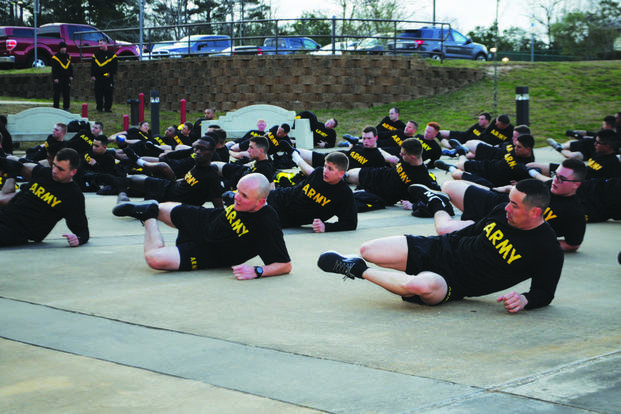Nagging minor injuries can shut you down from your favorite workouts or even limit your abilities at your job if you are in the tactical professions (military, police and firefighter). You can do several things to minimize the pain from certain injuries, as well as help heal them so you can be 100% again. Here is a question from a gentleman in his 40s who prefers to keep moving and not make too many changes to his workout because of minor joint tendinitis.
Stew - Do you have advice for an old and persistent elbow tendinitis? In fact, what do you recommend to avoid injuries or still be able to do something with minor nagging injuries such as joint tendinitis without aggravating it?
At my age (48), I tend to feel the high repetition of calisthenics workouts or high miles from running in the knees and elbows. The list below has been helpful over the years. Find the combination of options that work best for you and your nagging pain, if professional help from a doctor or physical therapist has failed to work for you.
Warm up better: If you are stuck with a nagging injury such as joint tendinitis, make sure to warm up well. Dress warm and get the blood flowing in the area for 10-15 minutes. Dynamic stretches are great for getting the body and joints ready for movement.
Even a few minutes of running will start to reduce the immediate pain of knee, iliotibial band tightness and plantar fasciitis for the short term, but the pain will set in once you are finished running or exercising. This is when you should focus on reducing the pain and inflammation. Go straight to the ice or heat.
Rest, ice and Motrin: This option sometimes is the best for immediate trauma and pain. Try to reduce repetitions, mileage and time in training, if possible. If not, make sure you end the day with ice and some type of anti-inflammatory medication. Remember RICE: rest, ice, compression and elevation. Some may disagree, but evidence still proves RICE is effective in minor pain control.
Good Foods for Healing: Avoid foods that cause inflammation and focus on foods and drinks that help relieve it. For a short list, avoid sugars, sodas, high sodium, fried foods and other processed foods. Eat more fruits and vegetables, such as salads with green leafy lettuce, tomatoes and spinach. Top it with tuna fish or salmon and nuts, and you have an outstanding anti-inflammation meal. Drink water, too.
Additional options: Foods may be many people's first option, but there are other ways to get the inflammation-reducing benefits from vitamins and supplements. Omega 3 capsules are the leading option, but consider other powders and pills such as Resveratrol.
Stretch, foam-roll or massage the pain away: Becoming more flexible through a daily stretching routine is smart for not only immediate pain, but for reducing the chances of future injuries related to various joint tendinitis. The foam roller and myofascial release/massage techniques have been invaluable for helping with the pain in the back, hips, iliotibial band, hamstrings, shins and feet.
But I recently have been getting some elbow aggravation (biceps tendon) typically from pull-ups or rope climbs.
I started to decrease my repetitions of pull-ups and change them into rows or biceps curls, and I added other gripping exercises like the rice bucket to work the forearms. The grip exercises warm up the forearms and helps with some elbow pain.
Sleeves or straps: The use of straps or sleeves for the forearm, knees or wrists are helpful for allowing the user to keep moving while minimizing pain.
Recovery tape: Kinesiology tape (or KT tape with other brands like Rock Tape) can help you get through minor nagging pain and still perform. You will see many athletes using this in nearly every sport with decent success. The Combat Ready Tape brand comes in ready-made, pre-cut pieces designed for every joint in the body.
There are many ways to help you get over nagging, overuse injuries if rest and medical treatment is not an option. You should not pick just one. Try as many as you can, especially your food and hydration. You might be doing everything right, but eating poorly sabotages your efforts. However, the number one recommendation is always to see a medical professional and rest the joint.
Stew Smith is a former Navy SEAL and fitness author certified as a Strength and Conditioning Specialist (CSCS) with the National Strength and Conditioning Association. Visit his Fitness eBook store if you’re looking to start a workout program to create a healthy lifestyle. Send your fitness questions to stew@stewsmith.com.
Want to Learn More About Military Life?
Whether you're thinking of joining the military, looking for fitness and basic training tips, or keeping up with military life and benefits, Military.com has you covered. Subscribe to Military.com to have military news, updates and resources delivered directly to your inbox.


















